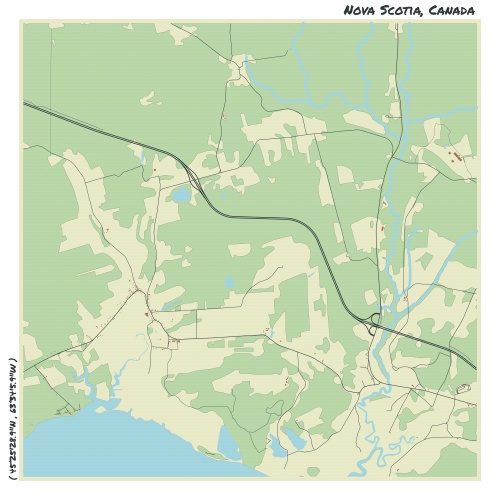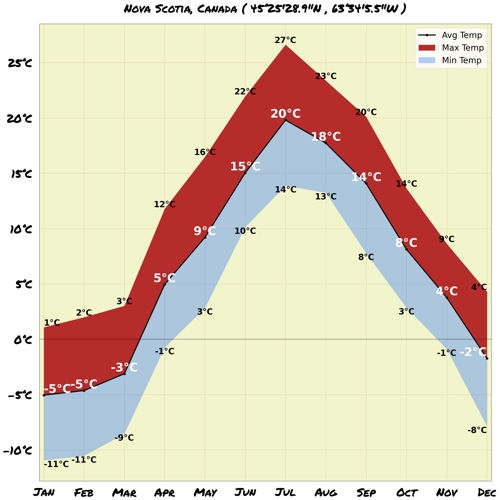Understand
Nova Scotia, a province in Canada with a population just under a million, is a remarkably diverse place. It is home to various distinct groups with their own unique quirks, culture, and language. These groups include the Mi'kmaq, Scots descendants, black Nova Scotians, French Acadians, Annapolis Valley farmers, Cape Bretoners, and Haligonians. One fascinating aspect of Nova Scotia is the South Shore dialect of the fishermen in that region, which is the language used in the novel "Rockbound". This dialect is a fusion of Shakespearean English, German, and unique local idioms. The province's history is rich and intriguing. It was originally named "Acadie" by Champlain and claimed for France in 1604. The area was settled by French immigrants who became prosperous farmers and fishermen until they were officially expelled by the British in the mid-18th century. The British then repopulated the region, especially the South Shore, with "foreign Protestants," primarily of Dutch and German descent. Today, many areas in Nova Scotia still embrace a strong Acadian French culture, such as the largest francophone municipality, Clare in Digby County, and Argyle in Yarmouth County. The province even hosted the World Acadian Congress in 2005. The Louisiana "cajun" name is actually a slang adaptation of "Acadien" in French. Longfellow's poem "Evangeline" and Zachary Richard's drum and voice song "Reveille" celebrate the victims of the Expulsion. Interestingly, French is more commonly heard in neighboring New Brunswick due to the expulsion. Halifax, the capital of Nova Scotia, is one of the oldest cities in North America. It played a critical role as a sea link during World Wars I and II. The infamous "Halifax explosion" occurred in 1917 when two ships collided in Halifax Harbour. It was the worst man-made explosion on Earth until the bombing of Hiroshima in 1945. Halifax has transformed into a thriving education and high-technology center. It is home to over a dozen post-secondary institutions, including Dalhousie University, and hosts substantial operations by major high-tech firms. In Nova Scotia, academics hold significant influence, possibly due to their concentration in the capital city. Some academics have even written legislation. The ideal time to visit Nova Scotia is between June and October when the weather is warm, the skies are blue, and the water is less frigid. The main byways along the coast offer stunning views, and during the summer months, many charming small shops and restaurants are open for business. However, watch out for mosquitoes and horseflies, especially after a storm in the summer. Interestingly, locals of desirable areas often exaggerate the cold, storms, and pests to discourage tourists from permanently moving in. Although this tendency has declined in recent years as the population has aged. Nova Scotia's South Shore stands out as one of the rare "Blue Zones" in the world, where an unusually high percentage of people live to be over 100 years old. The province proudly highlights this fact in some of its immigration ads.
Map & Climate
Popular Foods
 Poutine is a Canadian comfort food consisting of French fries topped with cheese curds and a generous amount of gravy. This dish originates from the province of Quebec but is now widely enjoyed across Canada. It's typically a non-spicy, warm, and filling meal.
Poutine is a Canadian comfort food consisting of French fries topped with cheese curds and a generous amount of gravy. This dish originates from the province of Quebec but is now widely enjoyed across Canada. It's typically a non-spicy, warm, and filling meal. Smoked salmon is a popular food item in Canada, particularly in British Columbia where the Pacific salmon is abundant. The salmon is cured with salt and sugar, then cold-smoked over wood chips to enhance its flavor. It's often served as an appetizer, accompanied by cream cheese, bagels, or crackers. The dish offers a mixture of savory and slightly smoky taste, making it a refreshing choice.
Smoked salmon is a popular food item in Canada, particularly in British Columbia where the Pacific salmon is abundant. The salmon is cured with salt and sugar, then cold-smoked over wood chips to enhance its flavor. It's often served as an appetizer, accompanied by cream cheese, bagels, or crackers. The dish offers a mixture of savory and slightly smoky taste, making it a refreshing choice. Butter tarts are a sweet and flaky dessert native to Canada, particularly popular in the prairie provinces. A butter tart consists of a pastry shell filled with a mixture of butter, sugar, and syrup, often with added raisins or pecans. These bite-sized treats offer a perfect balance of sweetness and richness, making them a beloved Canadian treat.
Butter tarts are a sweet and flaky dessert native to Canada, particularly popular in the prairie provinces. A butter tart consists of a pastry shell filled with a mixture of butter, sugar, and syrup, often with added raisins or pecans. These bite-sized treats offer a perfect balance of sweetness and richness, making them a beloved Canadian treat.




Comments
NO COMMENTS